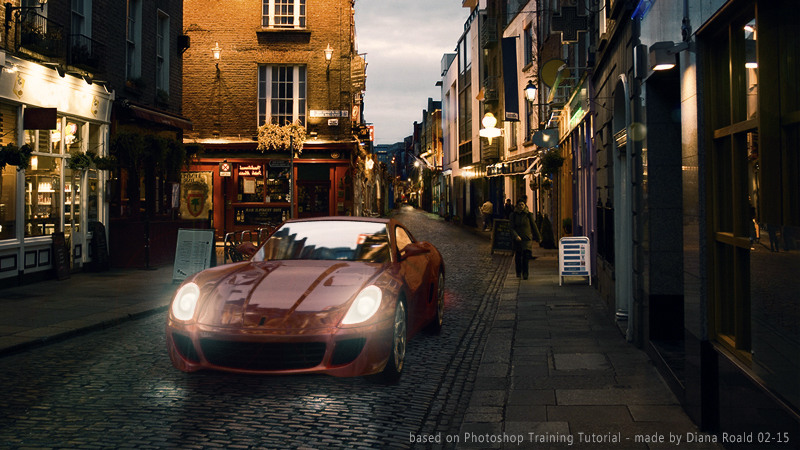Mastering the Art of Photorealistic Compositing: A Comprehensive Guide to Incorporating 3D Models into Photographs Using Photoshop

Introduction:
Adobe Photoshop, a cornerstone in the world of digital design, extends its capabilities into the realm of 3D modeling, enabling artists to seamlessly blend computer-generated elements with real-world photographs. This comprehensive guide aims to unravel the intricacies of compositing 3D models into photographs using Photoshop, providing detailed insights, step-by-step instructions, and professional tips. Whether you’re a seasoned designer or an aspiring artist, this guide will empower you to create stunning and realistic composite scenes that seamlessly integrate the digital and physical worlds.
Table of Contents:
- Introduction to 3D Model Compositing in Photoshop:
- a. The Evolution of 3D Integration in Photoshop
- b. The Significance of Photorealistic Compositing
- c. Exploring the Versatility of 3D Models in Photographic Scenes
- Choosing the Right Photograph for 3D Model Integration:
- a. Assessing Image Composition and Lighting Conditions
- b. Identifying Elements Suitable for 3D Model Integration
- c. Recognizing Perspective and Scale for Realism
- Essential Preparations for 3D Model Compositing:
- a. Setting Up a New Project in Photoshop
- b. Familiarizing Yourself with the 3D Workspace and Tools
- c. Organizing Layers for a Non-Destructive Workflow
- Importing and Placing 3D Models in Photoshop:
- a. Sourcing or Creating 3D Models for Integration
- b. Importing 3D Models into Photoshop
- c. Adjusting Scale, Position, and Rotation for Seamless Integration
- Configuring Lighting and Shading for Realism:
- a. Analyzing Directional Light Sources in the Photograph
- b. Adjusting 3D Model Lighting to Match the Scene
- c. Incorporating Shadows and Highlights for Cohesiveness
- Refining 3D Model Textures and Materials:
- a. Understanding Material Basics in Photoshop 3D
- b. Customizing Textures for Realistic Surface Appearance
- c. Balancing Reflectivity and Specular Highlights
- Integrating 3D Models into the Photograph:
- a. Matching Perspective and Depth of Field
- b. Adjusting Shadows and Highlights Based on Scene Lighting
- c. Blending Edges and Eliminating Unwanted Artifacts
- Fine-Tuning Details for Seamless Compositing:
- a. Refining Edges and Eliminating Unwanted Artifacts
- b. Adjusting Texture and Grain for Consistency
- c. Applying Depth of Field and Motion Blur for Realism
- Simulating Realistic Lighting Conditions:
- a. Analyzing Ambient Light and Global Illumination
- b. Incorporating Shadows and Highlights for a Natural Look
- c. Tweaking Light Intensity for Consistent Lighting
- Troubleshooting Common Challenges in 3D Model Compositing:
- a. Addressing Perspective Discrepancies
- b. Dealing with Complex Scene Elements
- c. Avoiding Unnatural Shadows and Distortions
- Saving and Exporting Composite Images:
- a. Choosing the Right File Format for Different Platforms
- b. Optimizing Images for Web or Print
- c. Preserving 3D Layers for Future Adjustments
- Inspirational Examples and Case Studies:
- a. Showcasing Noteworthy 3D Model Compositing Projects
- b. Breakdowns of Notable Challenges and Solutions
- c. Exploring Different Styles and Approaches in Photorealistic Compositing
Conclusion:
Compositing 3D models into photographs using Photoshop opens up a realm of creative possibilities, allowing designers to seamlessly blend the virtual and physical worlds. This comprehensive guide has equipped you with the knowledge and tools needed to master the art of photorealistic compositing. As you embark on your journey of creating composite scenes, remember that creativity, attention to detail, and a deep understanding of Photoshop’s capabilities will guide you towards crafting images that transcend the boundaries of traditional photography. So, dive into the world of 3D model compositing and let your imagination soar, creating captivating scenes that seamlessly merge reality and digital artistry.




